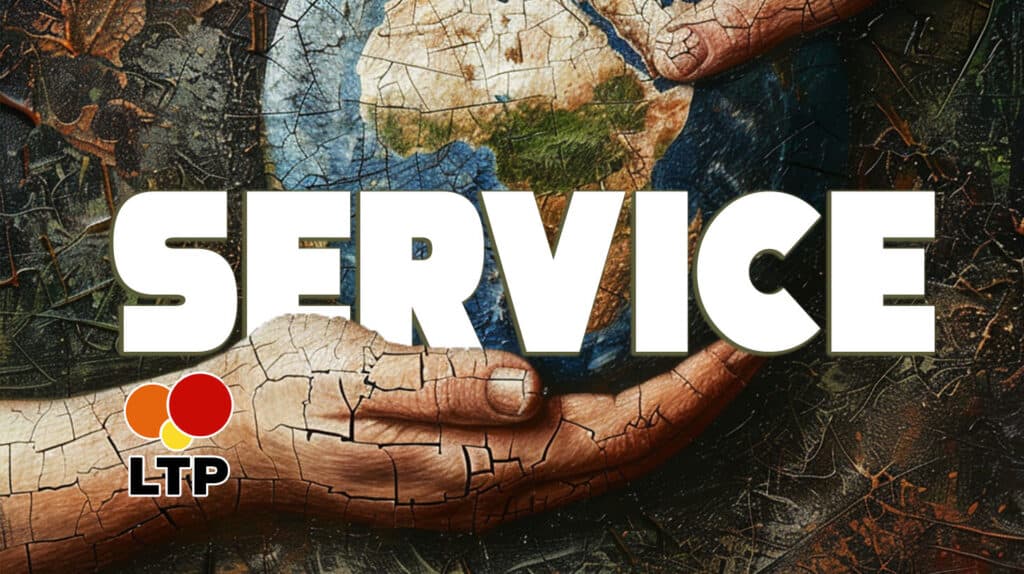
Planning a charity event can be rewarding, but it takes thoughtful organization to make a real impact. When you have a clear goal—whether it’s fundraising, building awareness, or helping community engagement—each part of your event can align to support this purpose.
In this article, we’ll explore a comprehensive, step-by-step approach to planning a charity event, covering 15 essentials.
After reading this article, you’ll have a well-rounded plan to create a meaningful, successful charity event that inspires your community and helps your cause thrive.
Let’s get started!
- 1. Define the Purpose of Your Event
- 2. Choose Your Audience
- 3. Pick the Right Type of Event
- 4. Set a Budget
- 5. Find Sponsors and Donors
- 6. Secure a Venue and Date
- 7. Plan the Program and Schedule
- 8. Organize Volunteers and Staff
- 9. Market the Event
- 10. Plan the Logistics
- 11. Arrange Entertainment or Activities
- 12. Prepare for Donations and Pledges
- 13. Thank Attendees and Follow Up
- 14. Reflect and Evaluate
- 15. Charity Event Ideas
- Charity Event Planner: A Recap
1. Define the Purpose of Your Event
Start by clearly identifying why you’re hosting the event. This step guides your event planning, helping nonprofit organizations, board members, and volunteers stay focused.
A clear purpose aligns event logistics, draws attention to your cause, and motivates supporters to contribute, ensuring a meaningful and successful event.
Action Steps:
- Decide on the primary goal: fundraising, awareness, or community building.
- Set clear objectives, such as a fundraising target or attendance goal.
- Outline the specific outcomes you want.
Knowing the purpose will guide every other decision you make.
See also 50 Life Goals List: Inspiring Ideas for a Fulfilling Life
2. Choose Your Audience

Understand who you want to attend. Your audience will influence the type of event, the location, and even the marketing approach.
Action Steps:
- Determine who supports your cause (age group, interests, location).
- Identify if the audience is local or if the event should attract people nationally or globally.
- Think about what will appeal to this group.
Having a defined audience makes planning easier and more focused.
3. Pick the Right Type of Event
The type of event you choose depends on your cause and audience. Some common charity events include galas, auctions, walkathons, and online fundraisers.
Event Types:
- Gala: Formal event with a dinner, entertainment, and speeches.
- Auction: Sell donated items, with proceeds going to the charity.
- Walkathon: Participants gather sponsors and walk a set distance.
- Online Event: Host a virtual auction or event on social media.
Action Steps:
- Consider what will resonate most with your audience.
- Keep your budget, time, and goals in mind.
The right event type can maximize attendance and contributions.
4. Set a Budget

A budget keeps your charity event on track and ensures resources are well-used. Define clear ticket prices based on your target audience. Remember, your budget impacts the event’s success in fundraising and benefits the organization.
Avoid overspending to ensure the charity’s purpose isn’t compromised.
Key Expenses:
- Venue rental
- Catering
- Entertainment
- Marketing and promotions
- Decorations and supplies
Action Steps:
- List all estimated expenses.
- Set aside extra funds for unexpected costs.
- Find ways to get discounts or donations.
Keeping a detailed budget will help you stay on track financially.
5. Find Sponsors and Donors
Sponsors can help cover event costs or provide items for auctions. Donors contribute funds and may even help promote your event.
Action Steps:
- Create a list of potential sponsors or donors.
- Reach out with a clear explanation of your event’s purpose.
- Offer benefits, like sponsor recognition on event materials or tickets.
Building strong relationships with sponsors can make your event more successful.
6. Secure a Venue and Date

Select a venue that fits the type of event and expected audience size. Consider the event’s theme and audience comfort.
Venue Ideas:
- Banquet halls or hotels for formal events.
- Outdoor parks for walkathons.
- Community centers for family-friendly events.
- Online platforms for virtual fundraisers.
Action Steps:
- Choose a date that won’t clash with major holidays or events.
- Confirm the venue has everything you need (seating, sound, etc.).
- Book early to ensure availability.
A good venue and date can make the event feel more professional and inviting.
See also Social Responsibility Norm: 5 Key Points to Understand
7. Plan the Program and Schedule

Organizing a charity event needs a clear program. Outline the main activities and set a schedule for smooth flow. Include speeches, activities, and breaks. Consult books about charity and event planning for ideas. Keep in mind nonprofit goals and consider corporate sponsorships for support.
Key Components:
- Welcome: Start with an introduction to the event and cause.
- Main Activity: Auction, performance, or walk.
- Thank You: Recognize sponsors, volunteers, and guests.
- Closing: Remind attendees of the impact they’ve made.
Action Steps:
- Plan the timing for each activity.
- Allow breaks, especially for long events.
- Include speeches that inspire or inform.
A clear schedule helps your event flow smoothly.
8. Organize Volunteers and Staff

Volunteers are essential for charity events. They help with setup, registration, and other critical tasks.
Action Steps:
- Recruit volunteers early.
- Assign clear roles, such as registration, decoration, or cleanup.
- Provide training and make sure everyone knows their responsibilities.
Having a reliable team in place reduces stress and ensures a smooth event.
9. Market the Event
Spread the word about your charity event. Marketing attracts attendees and raises awareness for your cause.
Marketing Tips:
- Social Media: Create event pages on Facebook, Instagram, and Twitter.
- Email Campaigns: Send emails to your contact list.
- Posters and Flyers: Place these in community centers or local businesses.
Action Steps:
- Design a catchy event logo or tagline.
- Use hashtags on social media to spread the word.
- Ask supporters to share the event with their networks.
The more people hear about your event, the better the turnout.
10. Plan the Logistics

Logistics include all the small details, like setup, registration, and technical needs.
Key Logistics:
- Seating arrangements
- Registration area
- Audio and video setup
- Transportation and parking
Action Steps:
- Make a checklist of every logistical need.
- Plan the order of setup, from decorations to seating.
- Test any equipment to avoid technical issues.
Good logistics ensure your event runs smoothly and professionally.
11. Arrange Entertainment or Activities
Entertainment and Playtime make the event enjoyable and memorable. Choose activities that suit the audience and event type.
Entertainment Ideas:
- Live band or DJ
- Guest speakers
- Performances
- Raffles or auctions
Action Steps:
- Contact entertainers or speakers in advance.
- Confirm any special requirements, like equipment.
- Make sure activities align with your event’s purpose.
Engaging in entertainment can increase attendance and encourage donations.
12. Prepare for Donations and Pledges

To raise money for charity, start organizing donations and pledges weeks before the event. Ensure committee members have clear roles in gathering funds. Planning ahead helps maximize contributions and keeps the entire event on track. Strong preparation in charity event planning is key for successful fundraising outcomes.
Action Steps:
- Set up a donation area or table.
- Offer different ways to donate (cash, credit, online).
- Prepare thank-you notes or small gifts for donors.
Clear donation options encourage more contributions.
13. Thank Attendees and Follow Up
After the event, send thank-you to attendees, sponsors, and volunteers. Let them know the impact of their support.
Action Steps:
- Send personalized thank-you notes.
- Share event photos or videos.
- Update them on how the funds will be used.
Expressing gratitude builds strong relationships and future support.
14. Reflect and Evaluate

Once the event is over, reflect on its successes and challenges. Evaluating each part helps you improve for next time.
Action Steps:
- Review your objectives. Did you meet them?
- Gather feedback from attendees and volunteers.
- Note areas for improvement in future events.
Reflecting on your event’s outcomes helps you grow as a planner.
15. Charity Event Ideas
If you’re still choosing your event type, here are some popular charity event ideas:
- Benefit Concert – Raise funds through ticket sales for a performance.
- Silent Auction – Auction off items, with proceeds going to charity.
- Bake Sale – Sell homemade treats to raise money.
- Charity Run/Walk – Host a race where participants gather sponsors.
- Online Crowdfunding Event – Use a crowdfunding site to reach a wider audience.
Each idea has its own unique appeal and can help you reach your fundraising goals
See also 15 Questions To Discover Your Life Purpose: A Guide to Self-Discovery
Charity Event Planner: A Recap
Planning a charity event requires focus and organization. Event planners often work with nonprofit organizations to create successful fundraising events. Choosing the right type of charity event—like auctions, galas, or donation drives—is important.
An experienced event company can handle logistics, helping ensure the entire event runs smoothly. Remember, clear goals and active engagement are key in charity event planning. Avoid “toxic charity,” or giving without true impact, by focusing on meaningful support.
When fundraising is well-planned, it can bring lasting benefits to nonprofits. With careful attention to detail, you’ll create an event that truly makes a difference for your cause.


